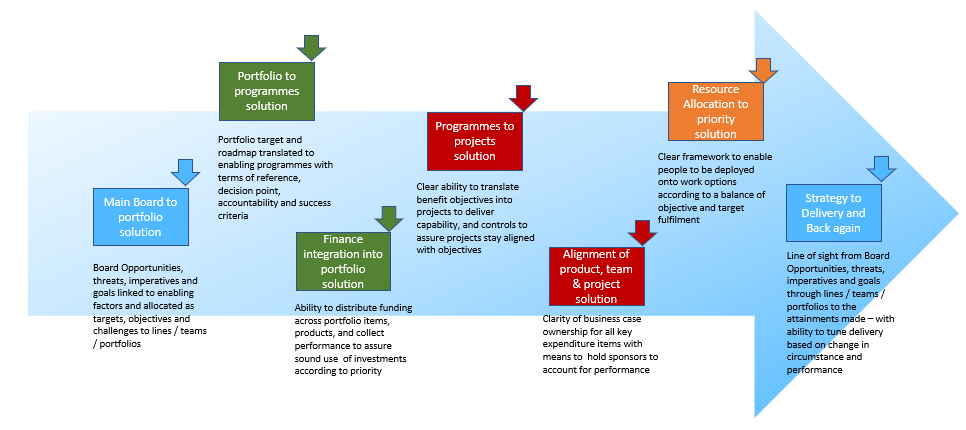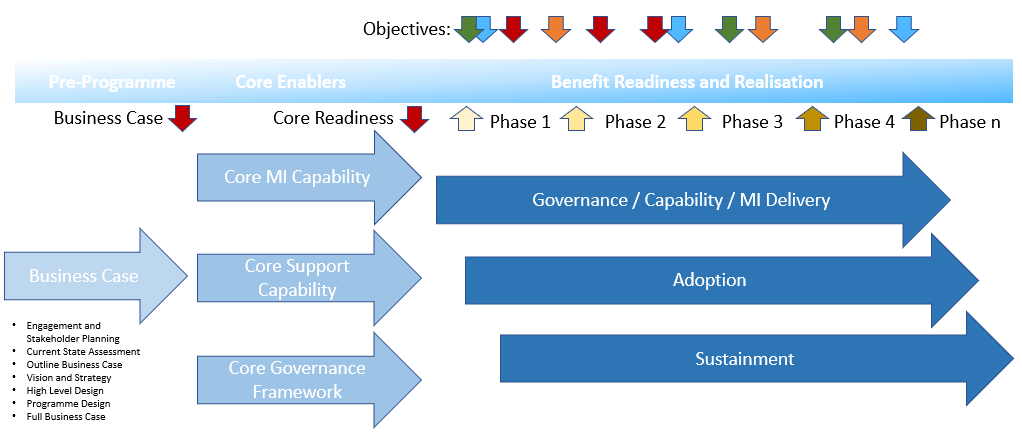Engagement
Business Integrated Governance is not a "local initiative". It needs business wide coordination and collaboration, and is perhaps a sum of a series of coordinated local initiatives.
BIG does not have to be "big bang" - i.e. take for ever and deliver nothing. BIG must be achievable, sustainable and deliver benefits. We believe that if you have a vision - your journey to a future state is likely to be smoother with stakeholders and more benefit laden than if you take a step then work out what next with no idea of end game.
The logical approach is to make an Outline Business case for a small amount of funding to develop the problem statement / opportunity and to develop a fuller business case. In preparing Full Business Case, the vision, high level design, roadmap and benefits can be clarified.
If we try to scrape together a Full Business Case with no support / resources / time - it won't be very good, and our proposal may be rejected. However, with Full Business Case approval, we can work with an organisation on the key enablers (Governance Model, Data Model, Support Arrangements) to prepare for benefit delivery.
However, other approaches are viable where it will not be feasible to take a fully holistic approach. For example, it may be possible to realise some benefits for a part of the organisation with some governance levels to enable requirements, feasibility and capability to be validated. Alternatively - an IT based approach may be possible, by providing fundamental capabilities which we can enable the business to explore at its own pace. Both of these approaches reduce engagement risk but slow down benefit delivery.
With the core enablers in place, we can become more agile in our delivery, and work through the objectives we set and refine them as we learn. We must think about adoption and sustainment resources. We must plan benefit realisation, see benefits, and promote them if we are to continue through each tranche of delivery.
Delivery of enablers / capability is one thing, attaining behaviour change is another. Culture is defined as the ideas, customs, and social behaviour around our work. It's norms, habits, idiosyncrasies, preferences, likes and dislikes. Some elements are good, some are bad. For BIG, we must develop aspects of our culture. Some aspects will change, and some will be new. So while we work on the BIG mechanisms, we also need to work on internalisation of the behaviour and attitude implications too, so that the BIG model is not something adopted and complied with – it becomes “how we do things around here”.
To do this we need vision, leadership, motivation, engagement, persuasion, incentive, support, reward / consequences and recognition. So, while our engagement model does have Adoption and sustainment workstreams – it will also have a softer, culture development workstream too.

